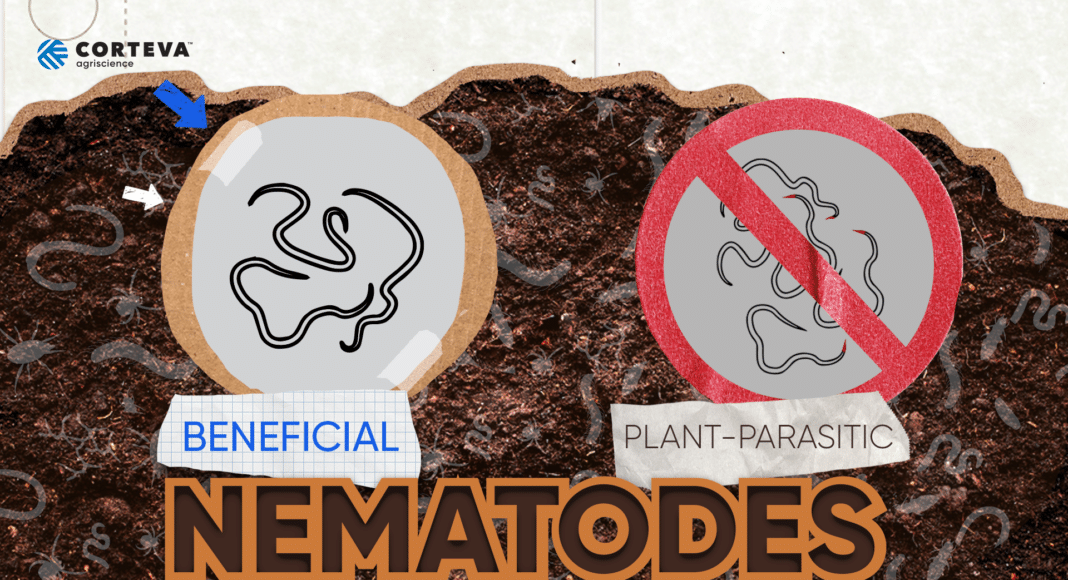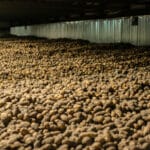Is your soil healthy?
Maintaining healthy soil is key to the success of your farm, as it helps sustain a productive environment for your crops, both today and in the future. Understanding and managing soil health is vital for growers.
Doran describes soil health as “The capacity of soil to function as a vital living system, within ecosystem and land-use boundaries, to sustain plant and animal productivity, maintain or enhance water and air quality, and promote plant and animal health” (Doran et al. 1996).
No matter the soil type, sound agricultural practices can help improve soil health. Some important farming fundamentals include conservation tillage, crop rotation, nutrient management and the use of cover crops.
It is important to understand that soil is a living and active part of the farm which lies beneath your feet. It contains a variety of beneficial organisms including bacteria, fungi, protozoa, macro- and micro-arthropods and nematodes. They contribute to nutrient cycling, natural disease and pest suppression, and improvement of your soils structure.
What are Beneficial Nematodes?
Nematodes are one of the most diverse and abundant groups of animals in the soil, and plants almost always interact with nematodes during their lifecycles.
Beneficial nematodes contribute in various ways to the soil and are involved in nutrient cycles that boost plant growth. Different types of nematodes feed on bacteria, fungi, insects and even harmful nematodes. These helpful organisms play an important role in keeping destructive plant pests and diseases at bay, thus promoting both soil biodiversity and health.
Healthy soils are rich in beneficial soil organisms that help plants improve water and nutrient usage, and suppress pests and diseases. They enhance the tolerance of crops to other environmental stresses such as weather events. This ultimately results in better long-term productivity of your land and the profitability of your farm.
What are Plant-Parasitic Nematodes?
Plant-parasitic nematodes are microscopic and invisible to the naked eye but may exist in extremely large numbers. They have the power to ravage a crop and cause significant yield loss. While preserving beneficial nematodes promotes soil biodiversity and health, controlling plant-parasitic nematodes is essential to keeping your crops healthy and productive.
There are many types of plant-parasitic nematodes and they are identified based on morphology under a microscope, typically by a specialist. Often, they are called the “invisible enemy”.
Root-knot nematodes are one of the most important types of plant-parasitic nematodes. Once they enter the crop roots, they cause knots also known as galls. When these knots become visible on the roots, this is the first sign of crop destruction.
The galls are feeding sites of plant-parasitic nematodes and significantly impair the ability of the plant to take up water and nutrients. Hundreds of nematode eggs come out of the galls and hatch in soil to reinfect the plant roots about every 30 days.
Root-knot nematodes occur widely around the world in numerous crops and cause estimated annual crop losses of more than $100 billion. Once in a field, they will be there year after year.
Protecting the Beneficial Nematodes and Reducing the Plant-Parasitic Nematodes
Understanding the role of beneficial nematodes in soil health is a key step toward optimizing crop production and sustaining your farm’s future. Conserving the beneficial nematodes and controlling the plant-parasitic ones can make a significant impact on your crops.
“You could spend a lot of money putting nutrients back into the soil with blended fertilizers, but it could be for nothing if nematode feeding has damaged those roots and the plant can’t access the nutrients,” independent crop consultant Joel Moor of Greenwood, Miss. says. “If that happens, you’re more than likely not going to have a good yield.”
Using a nematicide that’s gentle on the beneficial nematodes while stopping the plant-parasitic ones before they can find and infect the plant roots helps sustain the natural productivity of soil every agricultural cycle year after year.
Doing all you can to maintain the health of your soil supports your profitability today and the legacy of your farm for future generations.
For more information about Corteva Agriscience™ products or to contact our horticulture experts visit us at Horticulture.corteva.ca











